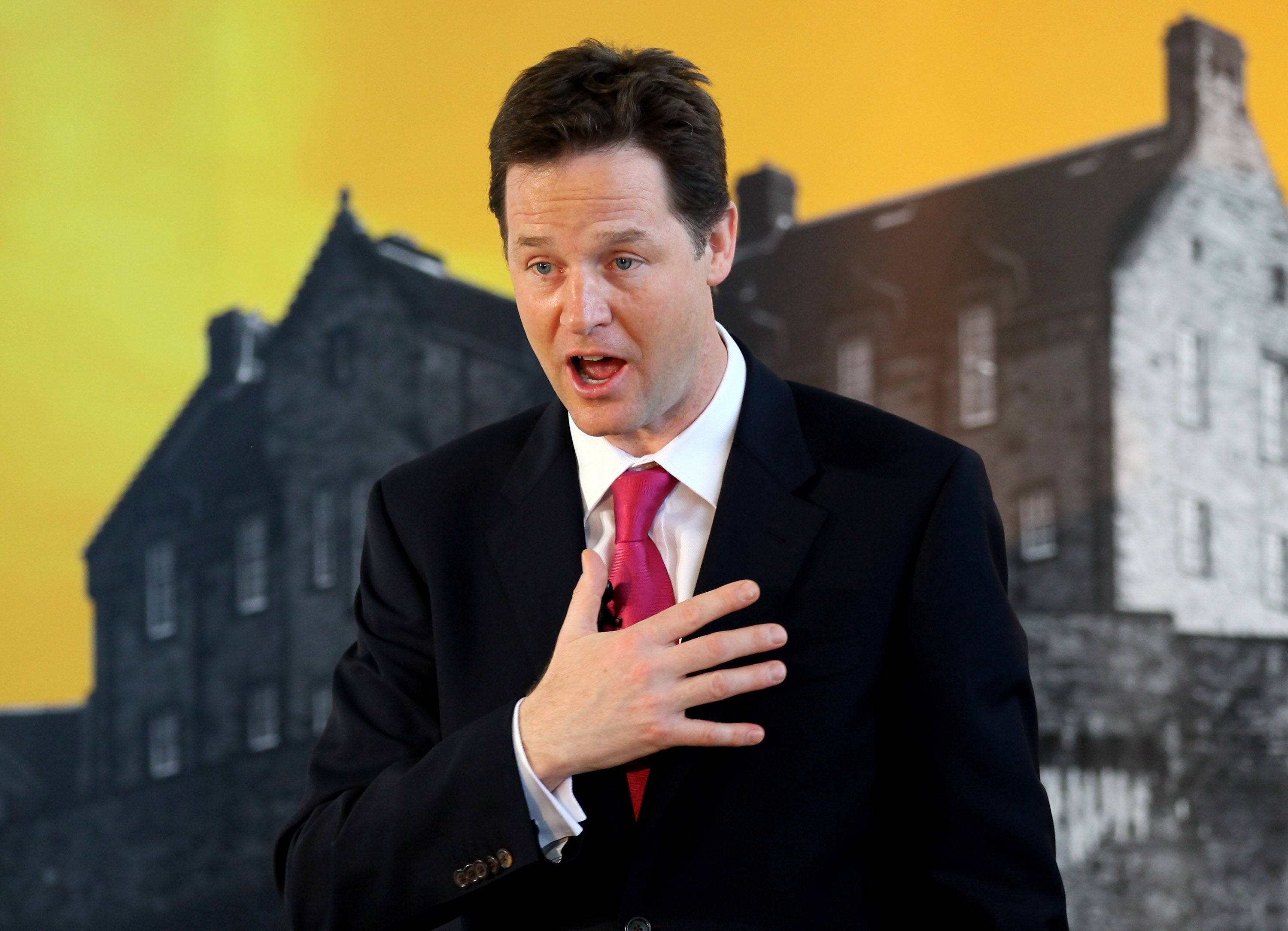Can Clegg exploit the gap in the market?
The task for today is to be the voice of moderation, to appeal to the thoughtful centrist.


How did Britain get so good at cycling? It all came down to sweaty shorts. Dave Brailsford, the inspirational performance director of British cycling, understood that tiny improvements in many areas – what he called “the aggregation of marginal gains” – would make the difference between victory and defeat. He even changed the fabric of the riders’ shorts so that they would retain less sweat, the weight of which cost them seconds in a long race.
Political campaigning, too, is all about the aggregation of marginal gains. Of course the national message is vital, but, when it comes to an election, making the right contact with the right voters can make the marginal difference between victory and defeat. That’s why parties invest so much money in software that allows them to identify and target the critical voters in each ward and constituency.
But such an electoral tool is only as good as the data it uses. And a devastating internal presentation leaked to The Spectator yesterday suggests that the Liberal Democrats, despite buying the best system on the market, are lamentably behind the Tories and Labour when it comes to exploiting it.
Apparently, the party has “functional political data on less than 2 per cent of the population”. It uses “biased methodology”, so the results are “statistically insignificant”. “Received wisdom trumps studies, evidence and metrics… We have little valid evidence that our tactics actually work.” Staff “lack research literacy”, and “we have no branding strategy.” Ouch!
If anything, this matters more for the Lib Dems than it would for their main rivals. Both the Conservatives and Labour have strong core votes. At least three-quarters of their support comes from people who identify themselves as Labour or Tory. So the main parties can afford to concentrate on the much smaller number of floating voters in each constituency.
The Lib Dems, by contrast, have a very small core vote – and it will be smaller still at the next election because people who always used to vote Lib Dem as a protest will probably not do so again. In 2010, just 43 per cent of Lib Dem voters said they identified with the party; the rest were voting tactically, or because they wanted to get rid of tuition fees, or they opposed the Iraq war, or they liked Nick Clegg in the debates.
Well, the Lib Dem leader can write off those categories in 2015. Labour supporters who voted tactically for a Lib Dem candidate to stop a Tory winning are likely to see the two Coalition partners as equally vile next time round. The Iraq war is over. Tuition fees? Enough said. And Cleggmania has morphed into Cleggphobia.
What’s more, the campaigning techniques beloved of Lib Dems will seem pretty outdated by the next election. The party loves stuffing letterboxes with leaflets full of parochial issues like potholes, street lights and litter. That made some sense when the party held power only locally, though research by Experian suggests that only elderly, single people ever bothered to look at them. Now the Lib Dems are in a national Coalition Government, an obsession with cracked paving stones will look pretty odd.
Anyway, if the party is to build up data on potential voters, instead of telling people what it has done, it needs to ask them what they care about. For the next year at least, it needs to be on “receive”, not “transmit”. Until then, the highly expensive and sophisticated Voter Activation Network (VAN) it has bought will limp along like a Reliant Robin.
For the competition is fierce. The Conservatives’ Voter Vault can predict your vote with 80 per cent accuracy based on your social and demographic profile. Labour’s Contact Creator reduced the swing away from the party in 2010 by two percentage points in the 100 seats where it was used most. In the top 10 constituencies, there was actually a small swing towards Labour. In marginal seats, this really matters – it’s like the sweat in your shorts.
But even an up-to-speed VAN won’t help if the Lib Dems don’t have an identifiable brand and a political message for the new voters they need to replace those who have deserted them. There’s a gap in the political market for a centrist party which combines economic rectitude with social compassion. That vacancy used to be filled by Tony Blair’s Labour Party. Now that Ed Miliband has moved Labour to the left and David Cameron has moved the Tories to the right, there is a space in the middle that hasn’t been there since the days of Michael Foot and Margaret Thatcher in the 1980s.
The trouble, as YouGov research has uncovered, is that centre-right voters look at the Lib Dems’ policies – especially the endless tax-the-rich talk – and see them as left wing. Centre-left voters, meanwhile, like the policies but look at the Lib Dems’ support for the Tories in government and see them as right wing. No one seems to identify the party as representing the common-sense middle.
So that is Clegg’s task for today. In his speech this afternoon, he needs to be the voice of moderation, to appeal to the thoughtful centrist voter, to demonstrate that it is possible to be caring while remaining economically responsible. It shouldn’t be hard to characterise most of his policies that way. But he is still struggling to be heard while the audience in the country remains wilfully disinclined to listen.
Email: m.sieghart@independent.co.uk Twitter: @MASieghart

Join our commenting forum
Join thought-provoking conversations, follow other Independent readers and see their replies